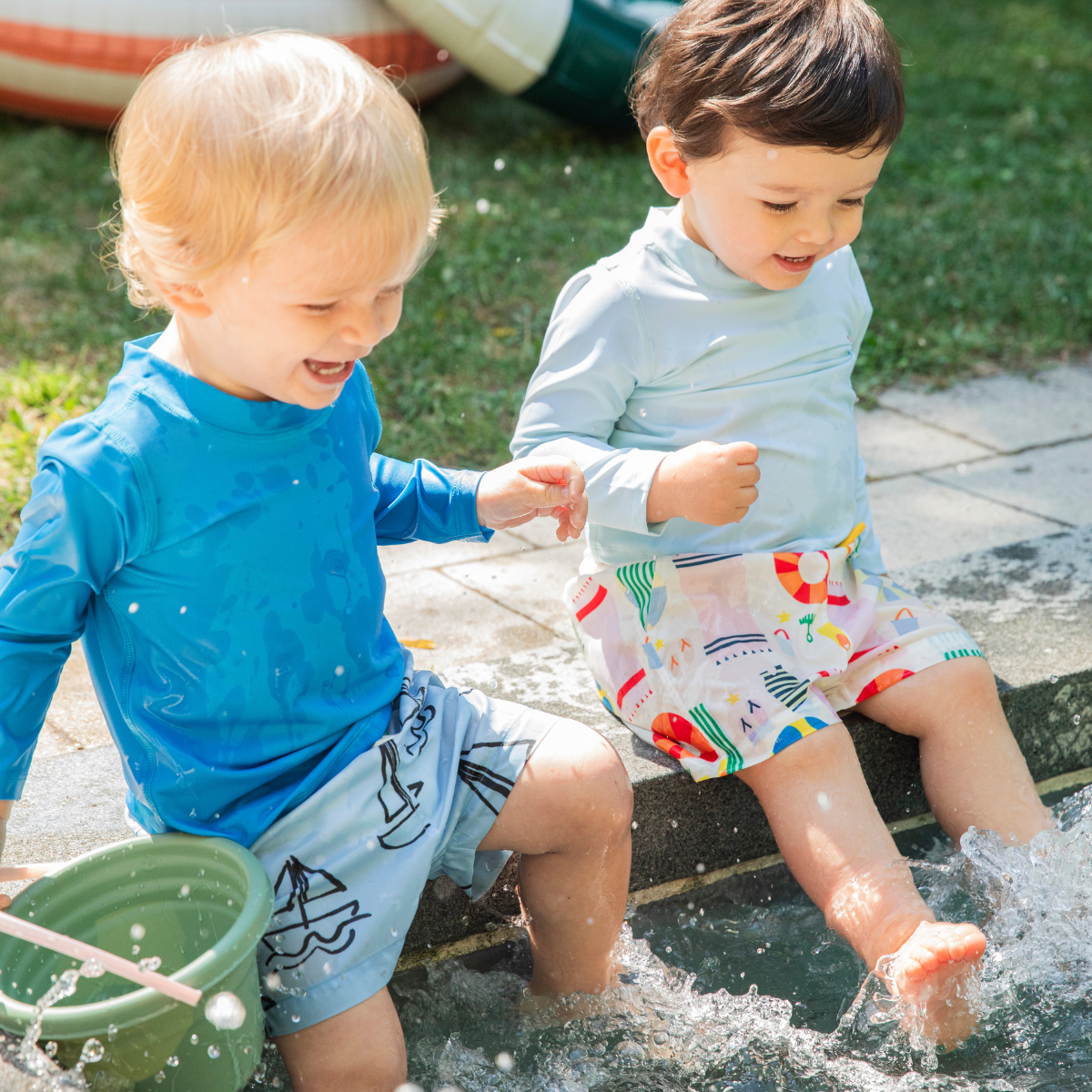Human history has shown that we’re not always so friendly to the planet on which we live. Many rivers have been overfished, rainforests mowed down, and oceans polluted. Since it isn’t wise to live in the past, we must acknowledge ways to improve and look forward.
Wearing eco-friendly clothing is one small way to set a good standard for future generations who will have responsibilities of their own. It’s great to talk about sustainability, but actually doing something is much more important.
Today we’re taking a closer look at what it means for clothes to be truly eco-friendly and how different materials impact the world in a positive or negative way.
Refer back to this guide if you want a future reminder of the best fabrics to choose for yourself or shopping for friends and family, especially their children. Sharing knowledge is key to making a change for the better.
Aspects of Sustainability
We hear the word thrown around everywhere: online, in podcasts, and in the workplace. We know that sustainability is good, but it would be nice to get a real definition and apply the concept to aspects of our daily lives (like food or fashion).
Broadly speaking, sustainability is used to describe and practice or process able to be maintained at a certain rate or level. In the context we hear it most, it refers to the health and balance of our ecosystems and the proper maintenance of our limited natural resources.

Anything from electric vehicles to forest management and wind turbines can fall under the umbrella of sustainability, but when we zoom in on the fashion world, we can break things down into three distinct parts: environment, society, and economics.
Environment involves all the key points of sustainability that we discuss so often. This is the quality of the air, the health of bodies of water, and natural resources such as fossil fuels, lumber, agriculture, and the energy required for production.
Society must be examined through the lens of sustainability as well. This involves giving workers fair treatment, ensuring that children are not exploited for labor, and that people can live happily and peacefully without facing danger in their working and living situations.
Economics needs to be considered as well, from the perspective of companies and consumers. The truth is that people want to buy new clothes and business shareholders demand growth – the key is achieving a balance that serves these desires without disrupting the other pillars of sustainable commitments.
Between environment, society, and economics, there are a lot of variables at play when mapping out the landscape of sustainability in the 21st century, especially with so many emerging markets stepping into the global competitive arena.
Regardless, it’s clear that the status quo for the global fashion industry is falling short on nearly every front in terms of sustainability. There is no single fix-all solution for turning things around – but a better tomorrow begins with ourselves.
Fabrics to Avoid
We don’t claim to have all the answers to create a sustainable future for fashion, but we’ve got some suggestions for you to get started in your own household.
The first step is to learn about fabrics and materials that actively do harm to the planet or have less-than-ethical supply chain and production practices. In general, these are the “fast-fashion” items you see at your local malls and department stores.
These clothes should be avoided for several reasons. Firstly, they require a lot of water and energy to produce – resources that can be better used to sustain human life or promote sustainable agriculture.
Manufacturers also tend to use unsafe chemicals to make these clothes at high volume, which often end up in the air or water supply around the production facilities where they’re made.
In many cases, these practices lead to the direct destruction of the natural environment, in the form of soil erosion or the elimination of forestland. Eventually, these clothes end up in landfills (since they tend not to be recycled) and are not biodegradable, either.
What fabrics tend to be the big culprits here? Synthetic fibers like rayon, viscose, and pure polyester are definitely at the top (or bottom) of the list. These require the most amount of energy to produce and do not break down naturally when left to decompose.
While we might think that natural and animal-based fibers are better, they take a toll on the environment in their own way, putting a strain on supply chains often result in animal cruelty.
If you do choose to wear animal-based fibers, be sure to avoid materials like leather since they are the most environmentally costly to produce.
Conscious Practices
You might be sorting through your wardrobe and wincing at the labels once you realize what your clothes are really made of. Don’t beat yourself up about it – what’s done is done. The important part is learning more and changing your behavior moving forward. We’ve only just begun to make this conscious shift together, and it requires patience from everyone!

With that said, the best thing you can do with your current clothes is to keep wearing them as long as you can. That’s right, don’t throw them out or scramble to give them away just yet. You’ve bought these clothes and they mean a lot to you, so put them to good use and don’t fret.
When it does come time to say goodbye to those clothes, do what you can to give them a second life, whether through donation or turning them into something new. If the clothes are in reasonable shape, there’s bound to be someone out there who will appreciate them.
If you have clothes that simply aren’t worth giving away, that’s a good sign that you made the most of those garments! We should all strive to maximize the lifespan of every item we own - clothes and otherwise. The same goes for children’s clothing—they’re constantly growing out of their wardrobes, so hand-me-downs or clothing donations are a wonderful idea.
Look up ways to recycle clothes in your town or city instead of just tossing them in the garbage.
Brands You Can Trust
Eventually, your wardrobe might start looking pretty thin, and you’ll be in need of some new threads. When shopping for your next round of clothes, look for fibers like recycled polyester, recycled cotton, sustainable viscose, hemp, and linen.
If you really love those animal-based fibers, try to do your research before you buy anything made from wool, cashmere, leather, or down. The products are out there – you just might need to look a little harder and spend a bit more than usual.
Finally, when shopping for kids and family members, be extra conscious about purchasing clothes. Infants become toddlers in the blink of an eye, and you want to make sure their clothes are safe for both them and the environment.
If you can save those eco-friendly baby clothes and donate them to friends or charities, all the better! Get the word out about sustainable clothing and inspire the next generation to do the same.
Sources:
Recycled Polyester | SustainYourStyle
Which Fabrics Are Most Sustainable? | Tree Hugger
What is Sustainable Fashion? (An Introduction and 3 Steps for Getting Started) | GREEN DREAMER







Leave a comment
This site is protected by hCaptcha and the hCaptcha Privacy Policy and Terms of Service apply.